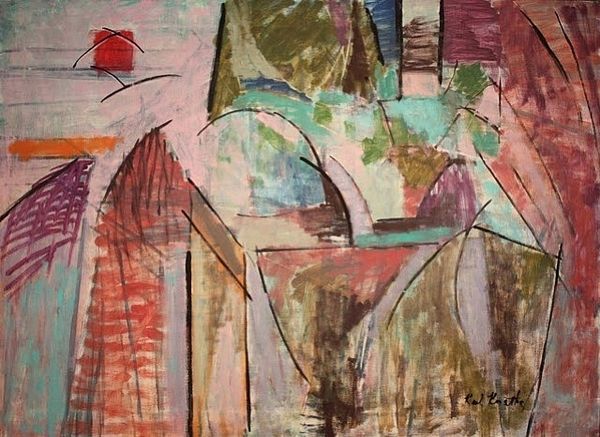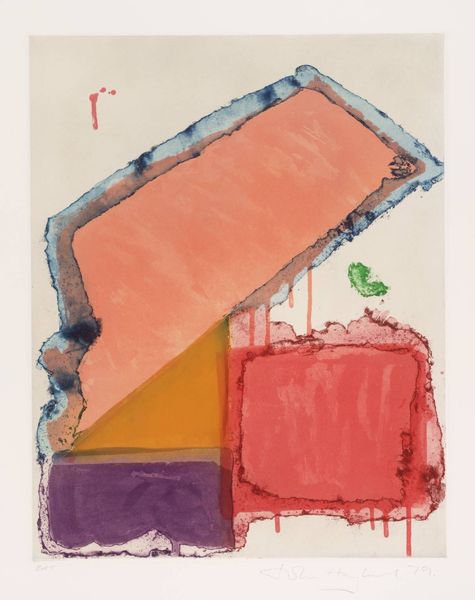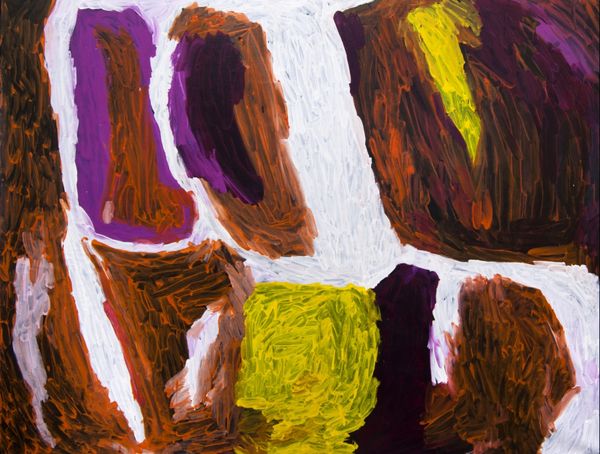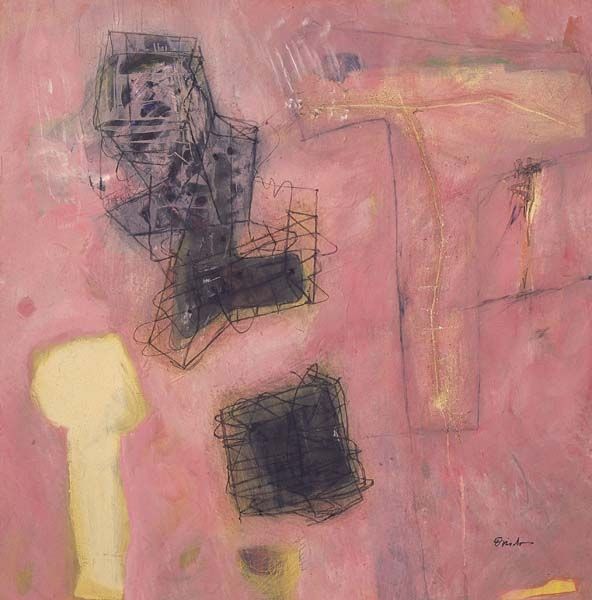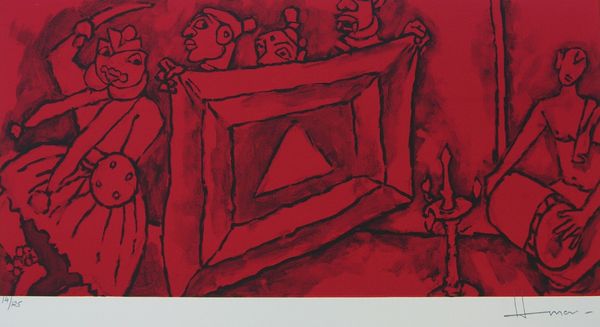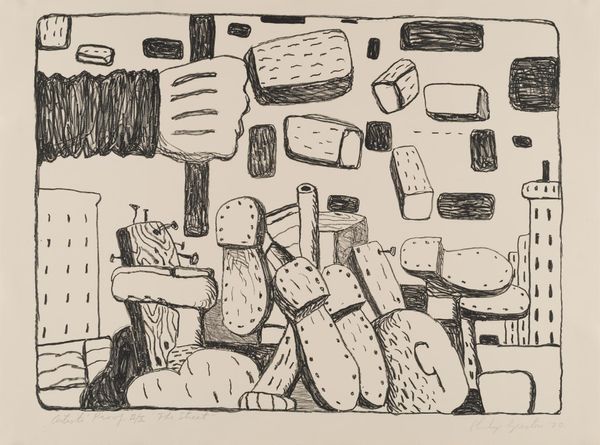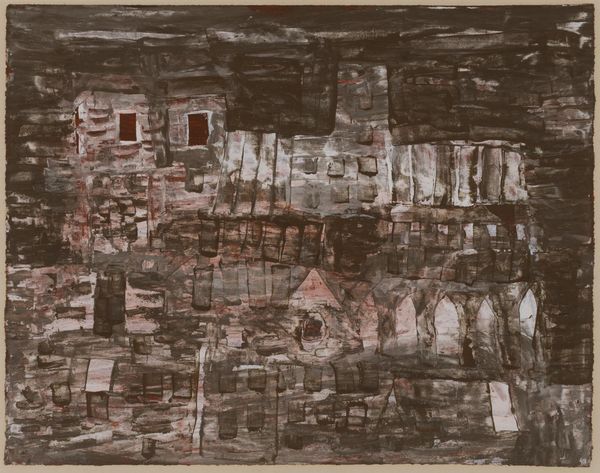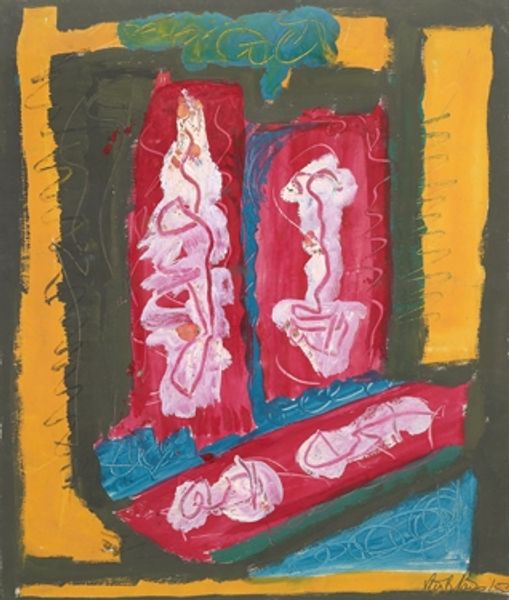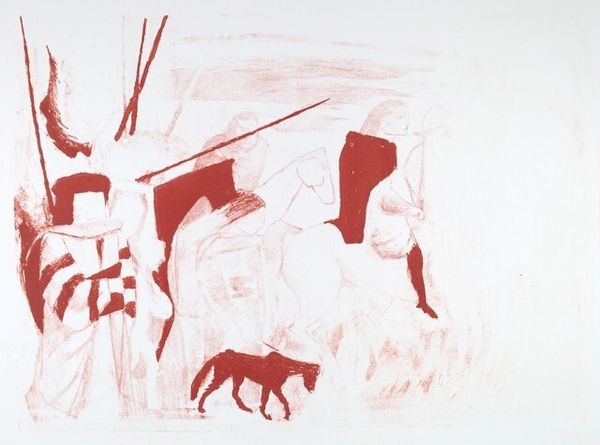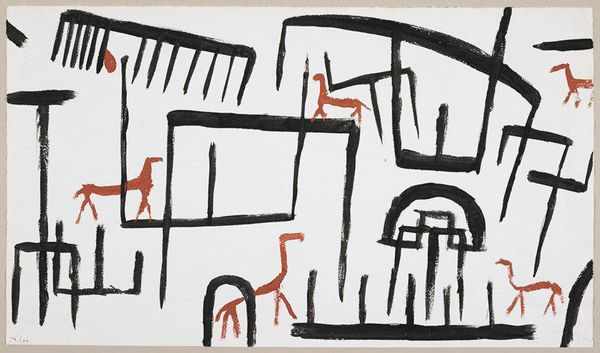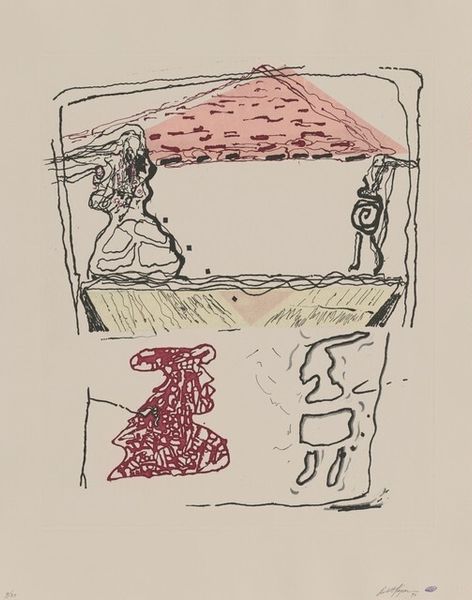
Dimensions: support: 769 x 1017 mm frame: 775 x 1022 x 38 mm
Copyright: © The Estate of Philip Guston | CC-BY-NC-ND 4.0 DEED, Photo: Tate
Curator: Philip Guston's painting, "Cornered," held in the Tate collection, presents a rather immediate experience. The canvas gives us simplified forms and potent color. Editor: It’s so fleshy and constrained. The pink, brick-like forms, the feeling of compression… it almost evokes a psychological claustrophobia, a feeling of being trapped. Curator: Guston abandoned abstraction in the late 60s for this figurative, cartoonish style, directly engaging with the political turmoil of the Vietnam War era and his own anxieties. Some saw the hooded figures as a reference to the KKK, a bold statement on American society. Editor: Indeed, the symbolism is hard to ignore, yet it's the compositional choices that amplify the discomfort. The dense clustering of shapes, the restricted palette... it all tightens the emotional screws. Curator: The rawness of the paint application, too, contributes to the sense of urgency, a sort of unrefined truth. Editor: Ultimately, "Cornered" offers a space to consider the potency and responsibility of imagery within historical contexts.
Comments
Join the conversation
Join millions of artists and users on Artera today and experience the ultimate creative platform.
tate 6 months ago
⋮
Guston had included sinister images of the Ku Klux Klan in his early murals, one of which was shot at and destroyed by Klan supporters when first shown. In the 1960s he returned to figurative painting and reintroduced the hooded Klansmen to his work. Guston meant his paintings to be interpreted in the light of the political violence of the decade, but he also saw the Klan paintings as ironic self-portraits: 'The idea of evil fascinated me¿I almost tried to imagine that I was living with the Klan. What would it be like to be evil? To plan, to plot.' Gallery label, August 2004

